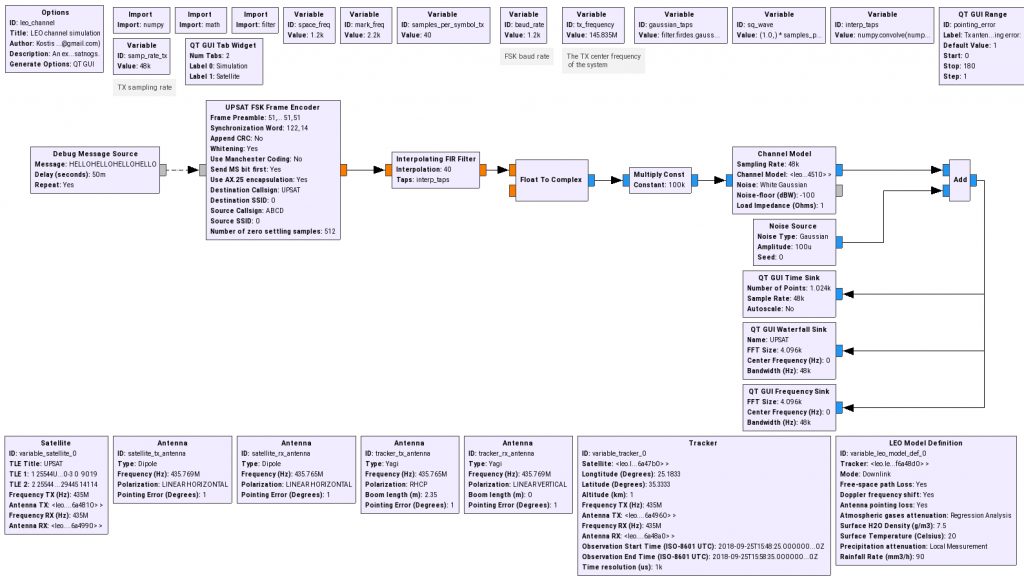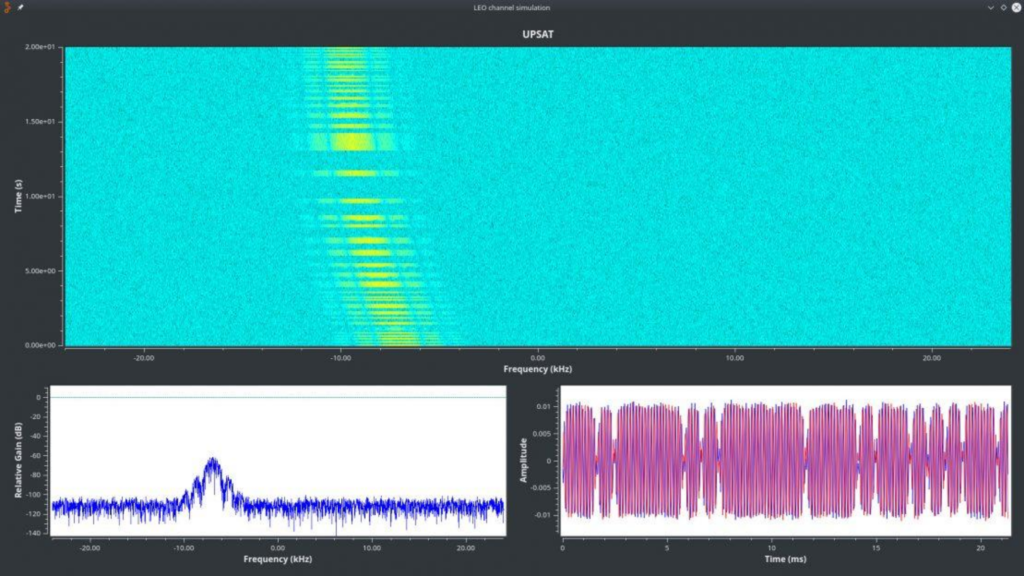In order to understand what gr-leo is and why it is considered to be a powerful, open-source simulation tool, let us first take a look at why it is necessary. Gr-leo is here to fill a gap and to ensure that the quality of communication between a satellite and the ground station is not impaired in any way.
The case
For the success of a satellite mission, there are many conditions that should be taken into consideration. Telecommunication between Earth and a satellite plays a vital role in that success. However, the quality of the telecommunication can be majorly affected by a number of parameters. These can impact and reduce the quality of transmission between Earth and a Satellite. Some of these parameters are: the relative motion of the orbiting satellite, the operating frequencies, the antenna set-up and of course the atmospheric phenomena. In order for the parameters to be predicted, the system should undergo extensive testing under realistic channel conditions and not in a lab environment as that would not be realistic enough.
The solution
Gr-leo is an open-source, simulation tool that facilitates the testing of all these parameters under realistic channel conditions. It allows for the continuous testing of a system’s development, debugging and evaluation. This way the channel conditions are simulated to be realistic enough and indicative of the failures which might affect telecommunication.
The Build-up
Gr-leo is built with the implementation of a GNU Radio module. An Out-of-the-Tree module is a GNU Radio component that no longer lives under the GNU Radio source tree. This means that one can use the basic GNU radio blocks and reconfigure them so as to extend their functionality as they deem necessary. The new blocks created are also available to the community and can be combined with the existing blocks. This is the case with gr-leo. It adheres to the programming notion of blocks as it is found on GNU Radio, but there are new blocks created to suit the project’s needs. GNU Radio provides the community with a vast range of signal processing and channel estimation blocks. However, these can not extensively cater to the needs of a space telecommunication channel. This is why in order to build gr-leo new processing blocks were configured; with each block simulating a different component found in the space channel communication.
A more detailed look into gr-leo
Gr-leo is an open-source, space channel simulator; a tool created to facilitate the simulation of the Earth-Satellite system operation and to explore the possible failures that may occur in space channel telecommunication.
At the core of gr-leo is the channel model definition. The channel model definitions link the different components making up the Earth-Space communication system with a single GNU Radio block. The blocks are synchronous. Their functionality is to pass the signal from the input port to the worker function, alongside a pointer to the output buffer for the duration of satellite observation. A channel model block accepts a list of required parameters that need to be taken into consideration during the channel simulation. Gr-leo is efficient and versatile not only because it creates the appropriate realistic conditions for testing but also because it explores a wide range of parameters in great detail.
Below is an example of a UPSAT flowgraph combining gr-leo and the UPSAT transmitter. Both are included in the gr-satnogs module.


By using the gr-leo module with the GNU Radio Companion integrated blocks we succeed in:
- Defining a satellite and describing its orbit by providing a valid TLE.
- Defining a tracker by specifying its coordinates, the operating frequencies, the antenna type and an observation time-frame.
- Defining the communication channel model and specifying the desired attenuation types which need to be simulated.
Once these parameters are specified, the channel model block attenuates the input signal according to the defined channel model and the orbit of the satellite described by the TLE.
Takeaway
Gr-leo is an open-source space channel simulator developed as a subactivity of SDR Makerspace. It is created to facilitate testing (under realistic conditions) of all those different parameters affecting the quality of transmission between a ground station and an orbiting satellite. Built on the GNU Radio’s programming blocks it adheres to the open-source principles. It extends the use and functionalities of the basic GNU blocks in order to be able to serve the needs and the purposes of a space telecommunication channel. gr-leo is open-source and the blocks created are available to be used by the GNU Radio community. Contrary to other telecommunication channel simulation projects which are proprietary and provided under expensive licenses, gr-leo is open-source, available for everyone in the GNU Radio community to use and it is a powerful and efficient simulator.
If this sounds interesting to you and you wish to find out more you can take a look at the public repo, the wiki and the documentation pages! Feel free to join our community to share your thoughts and ideas!